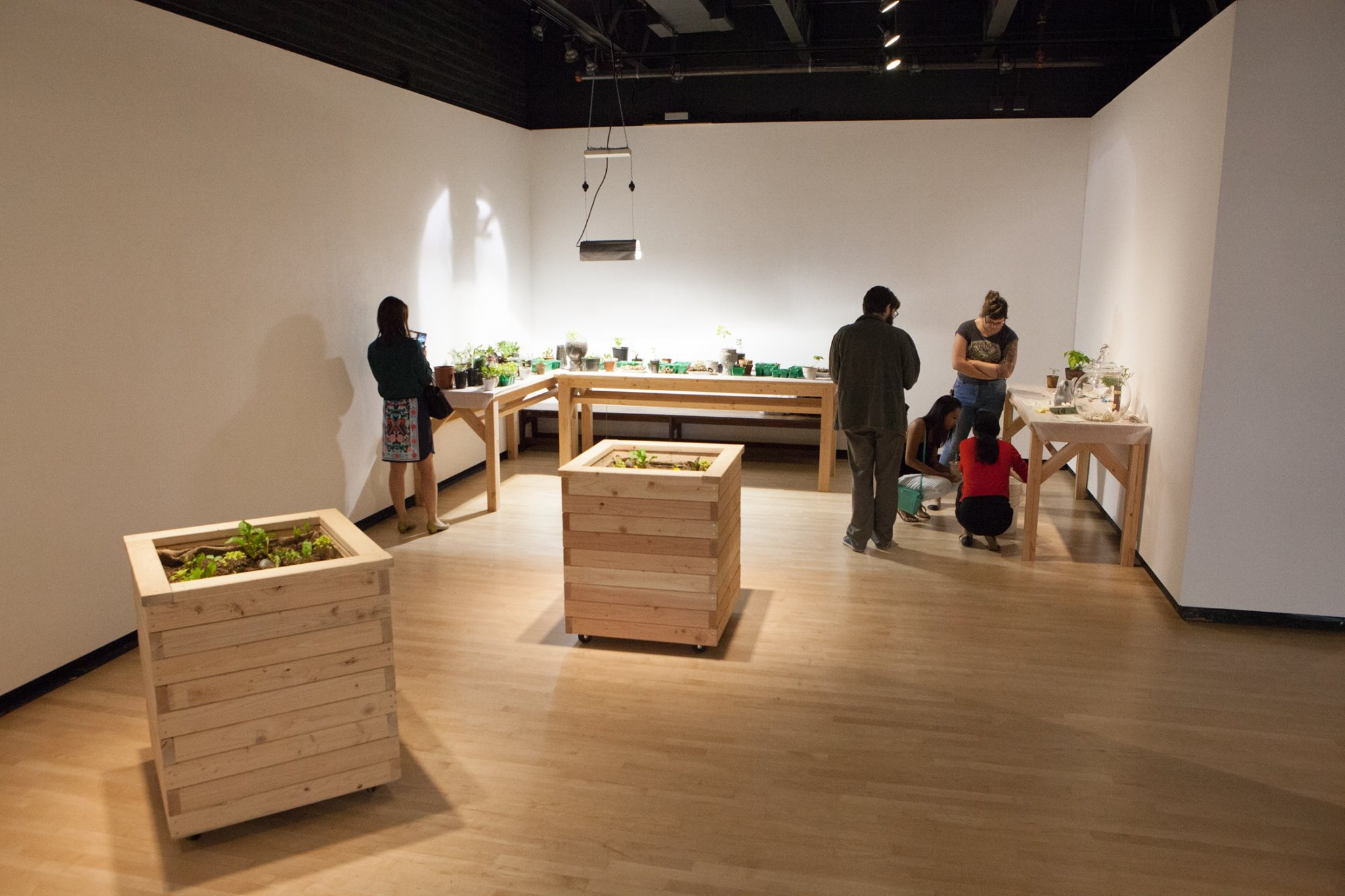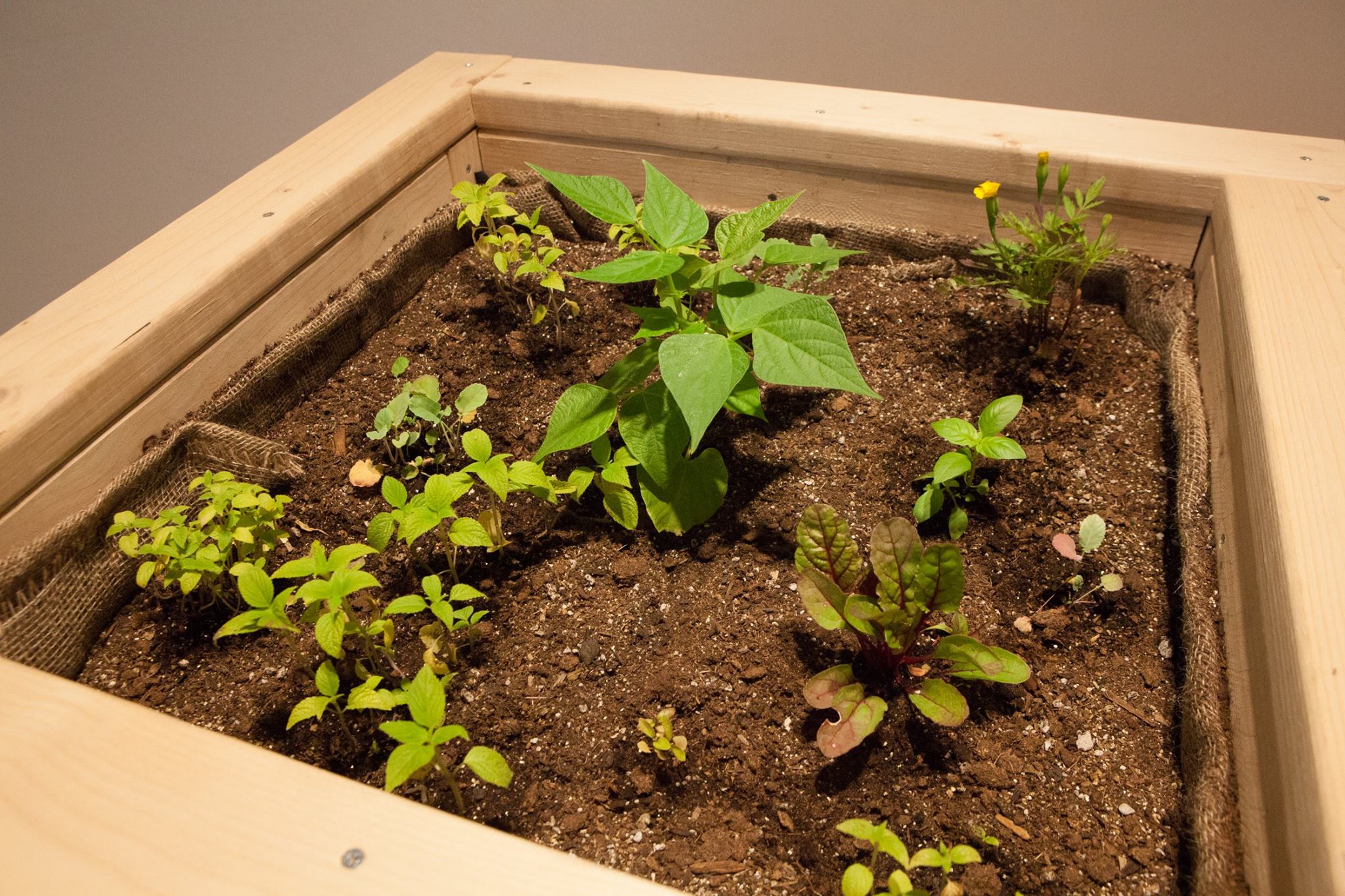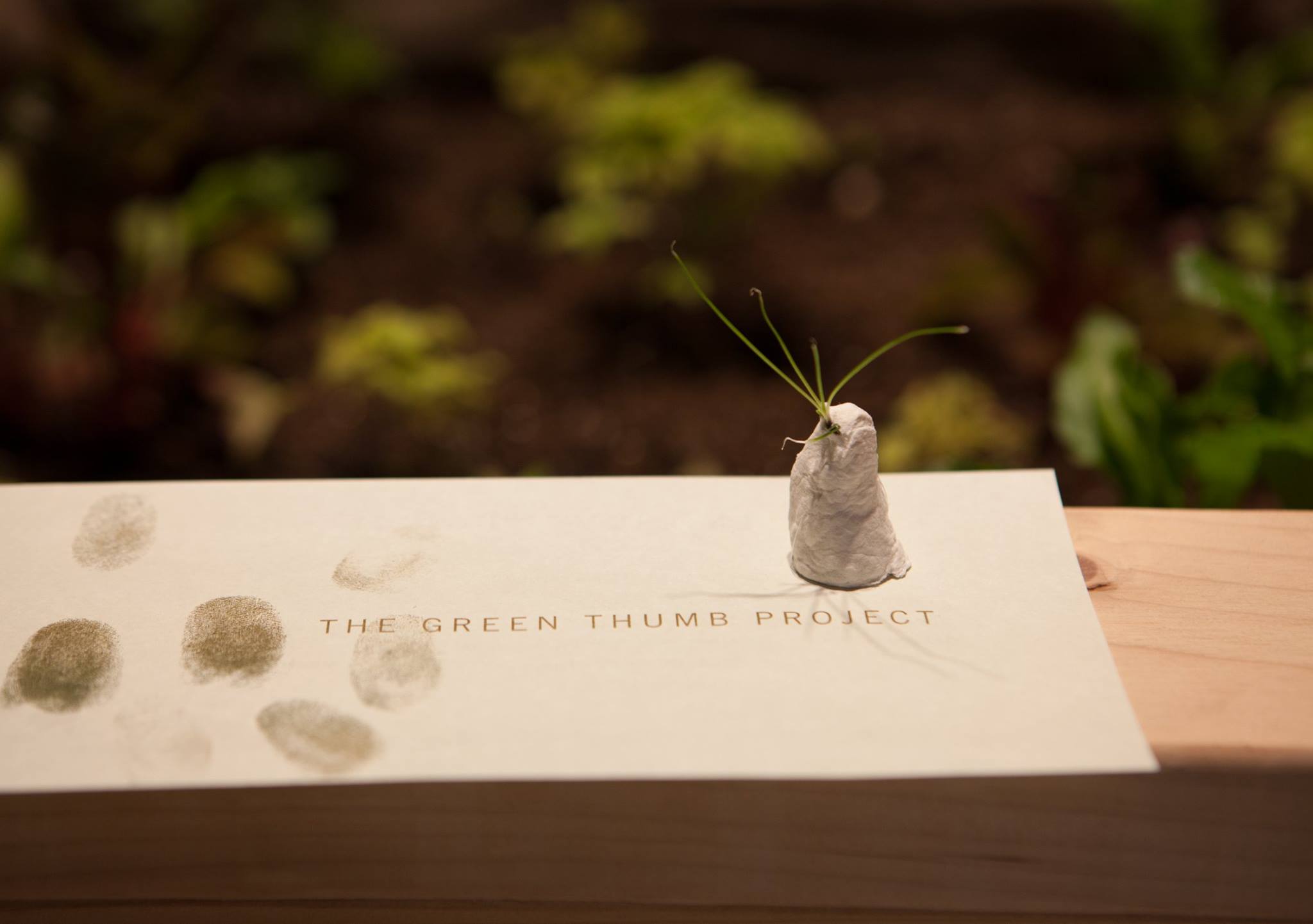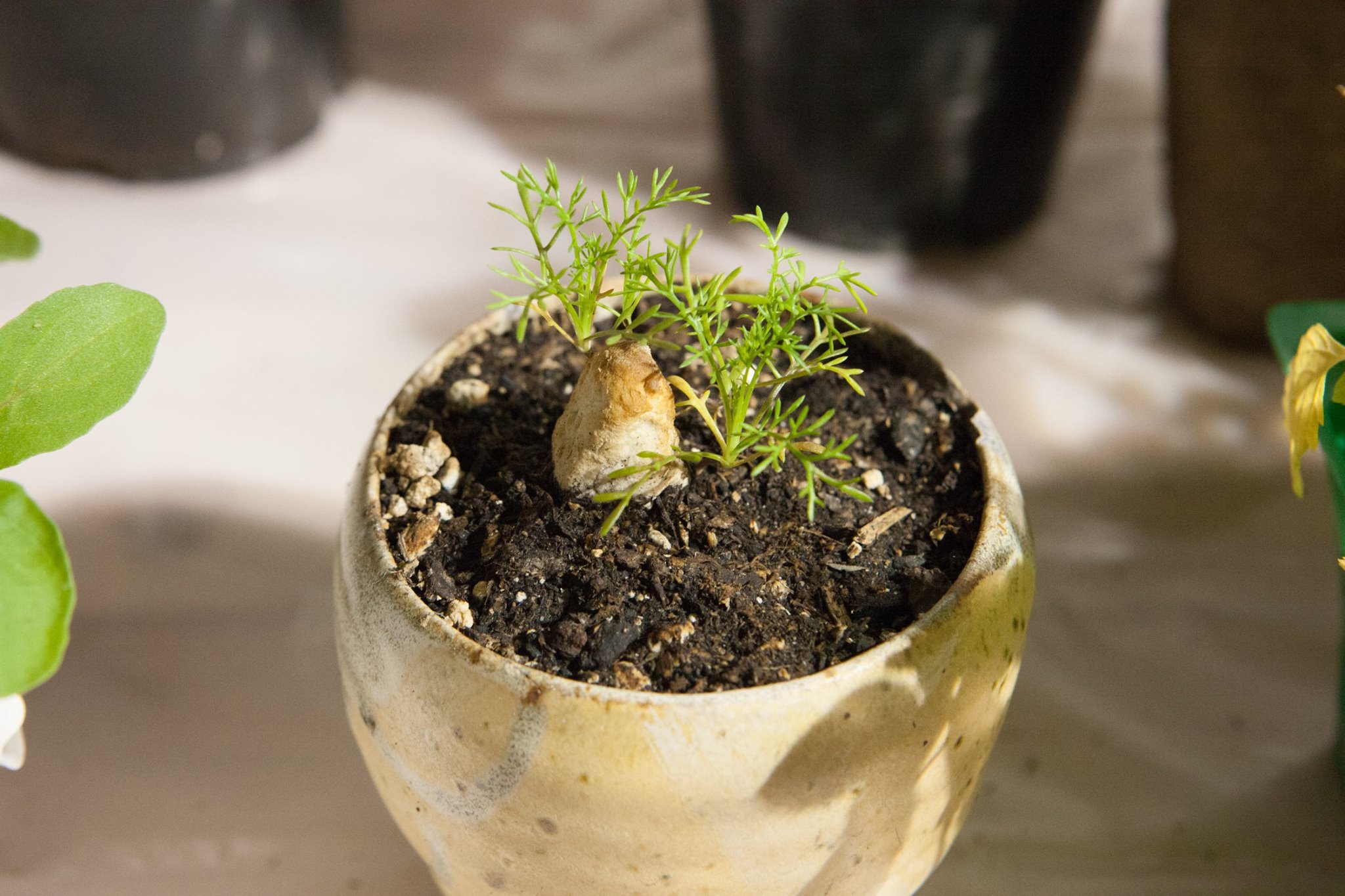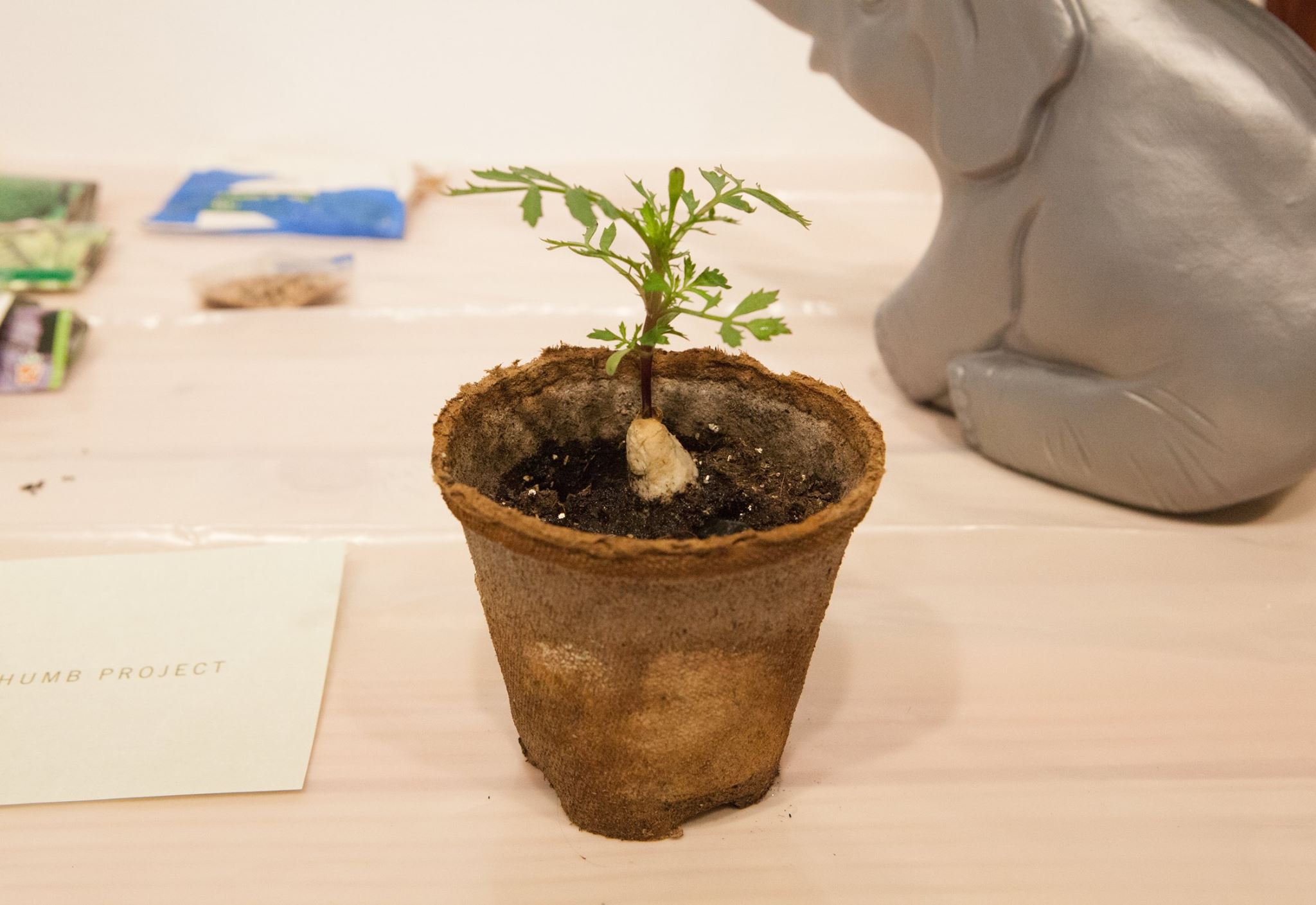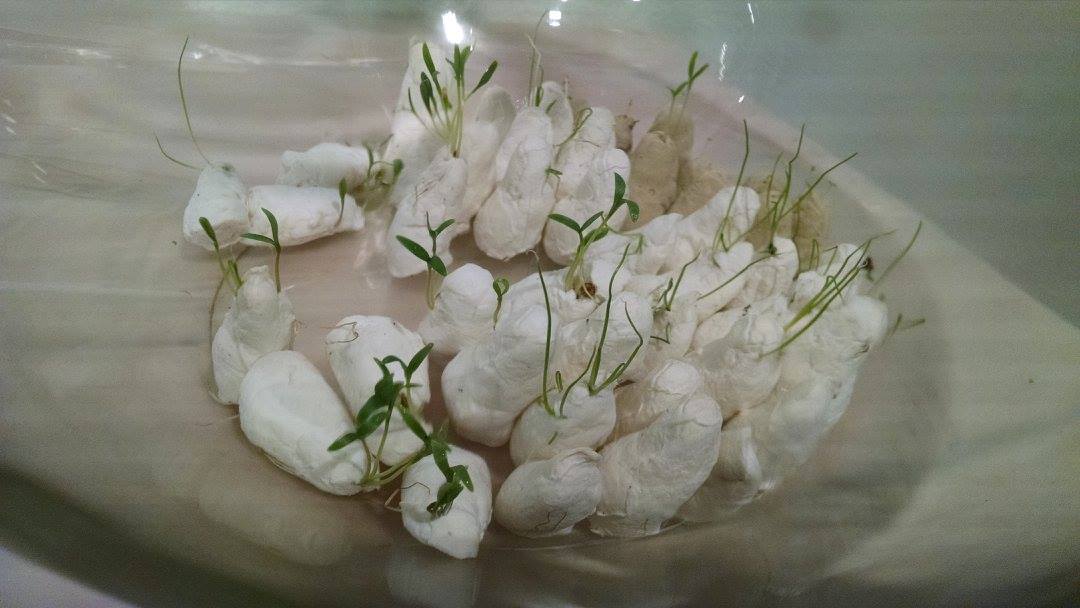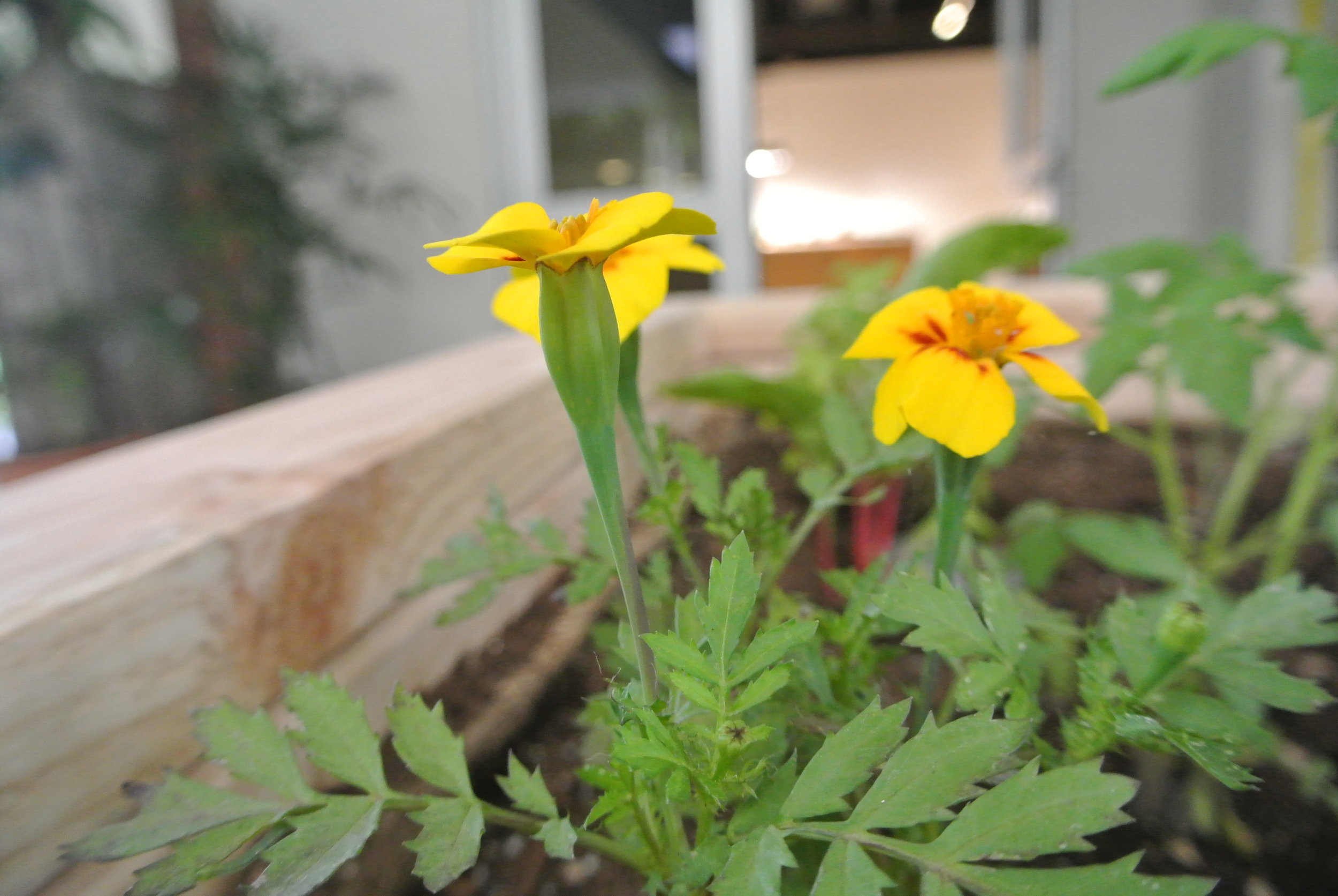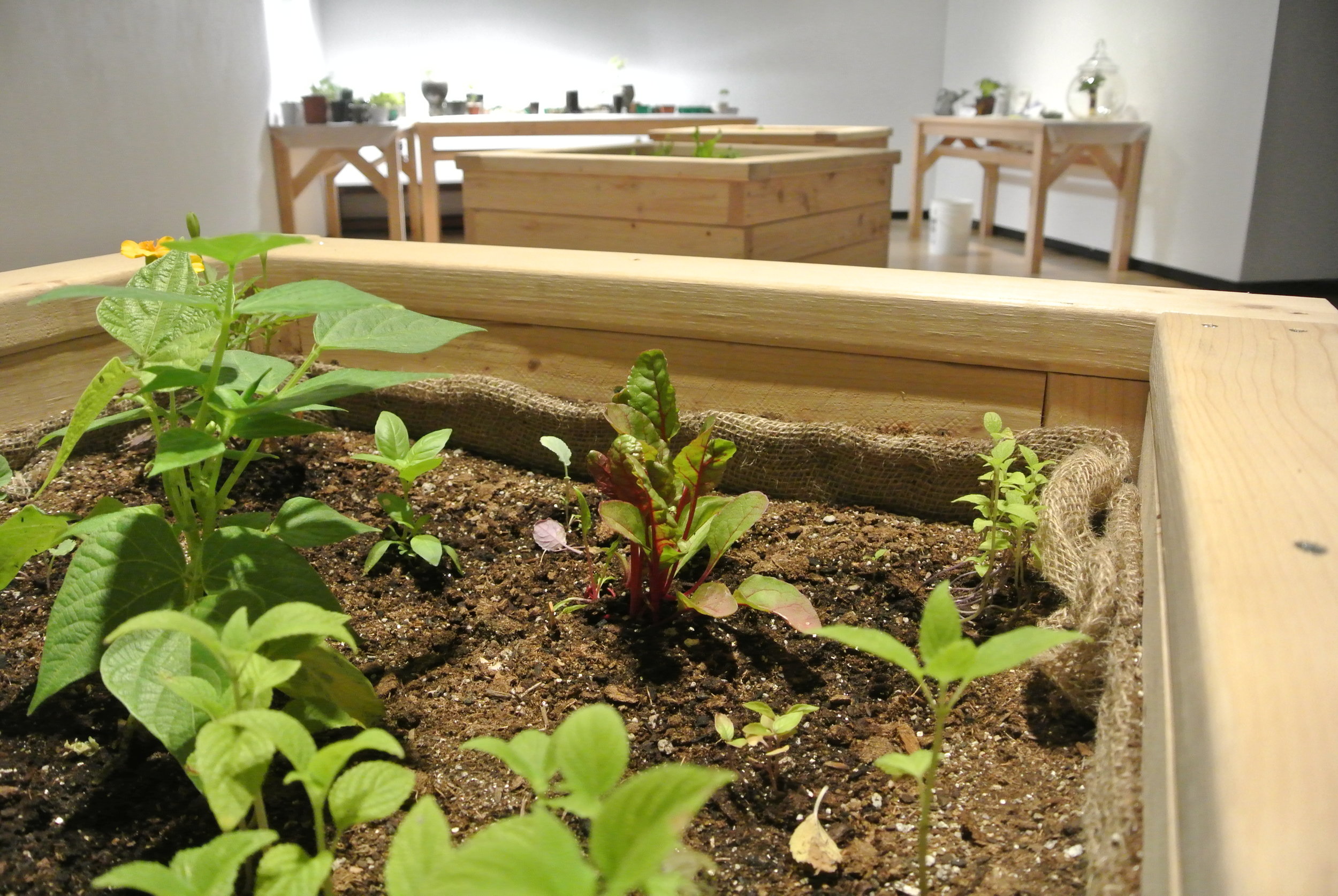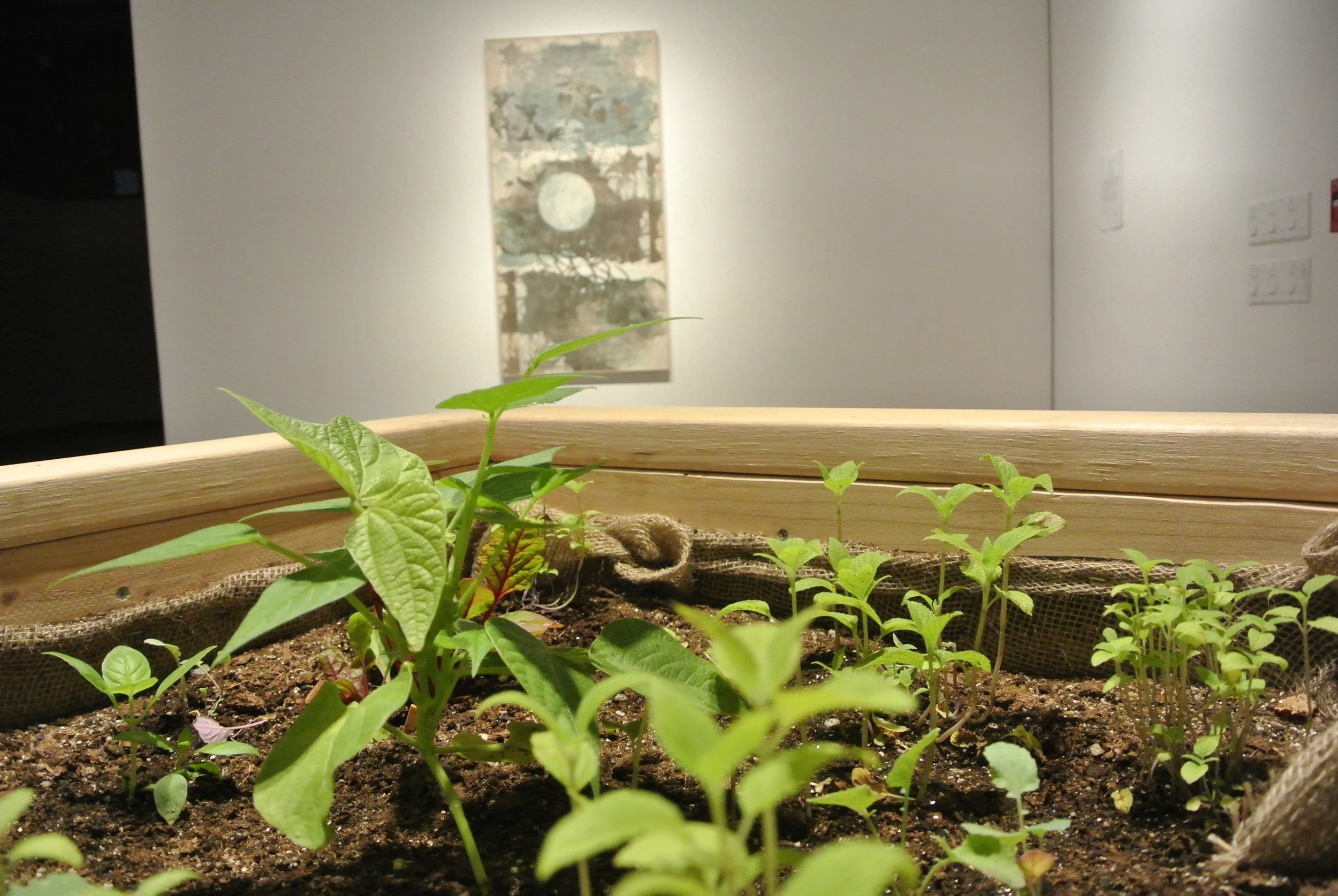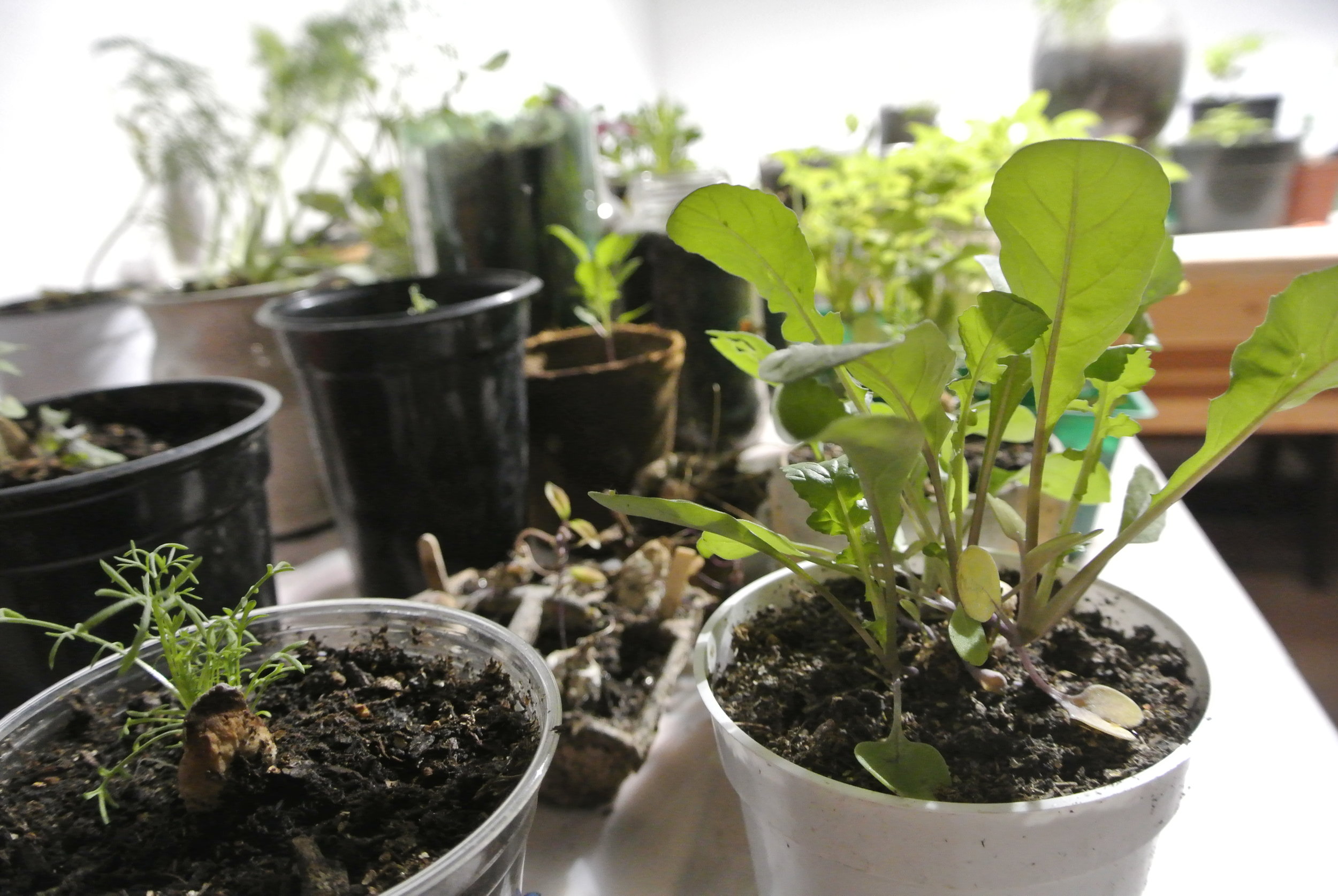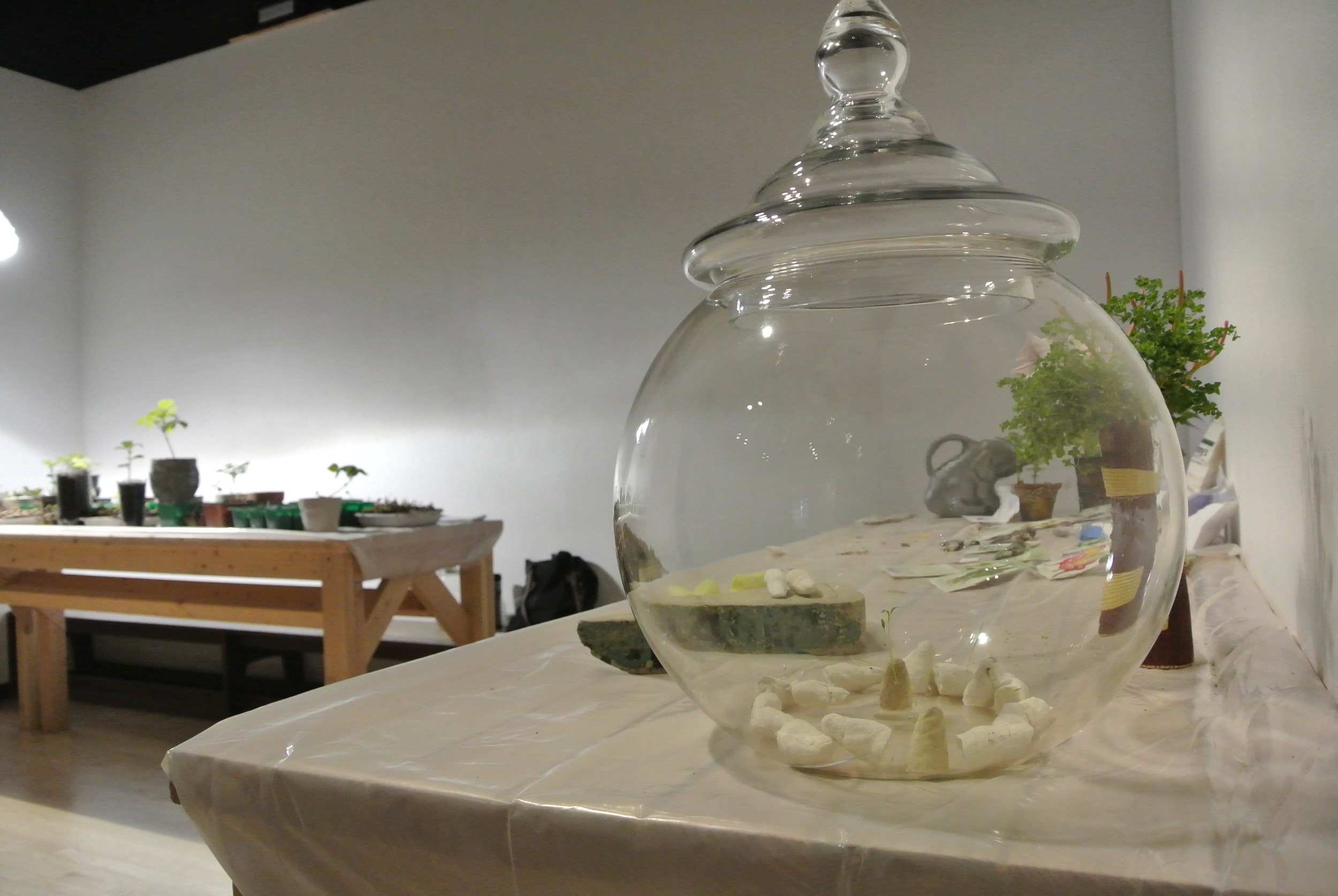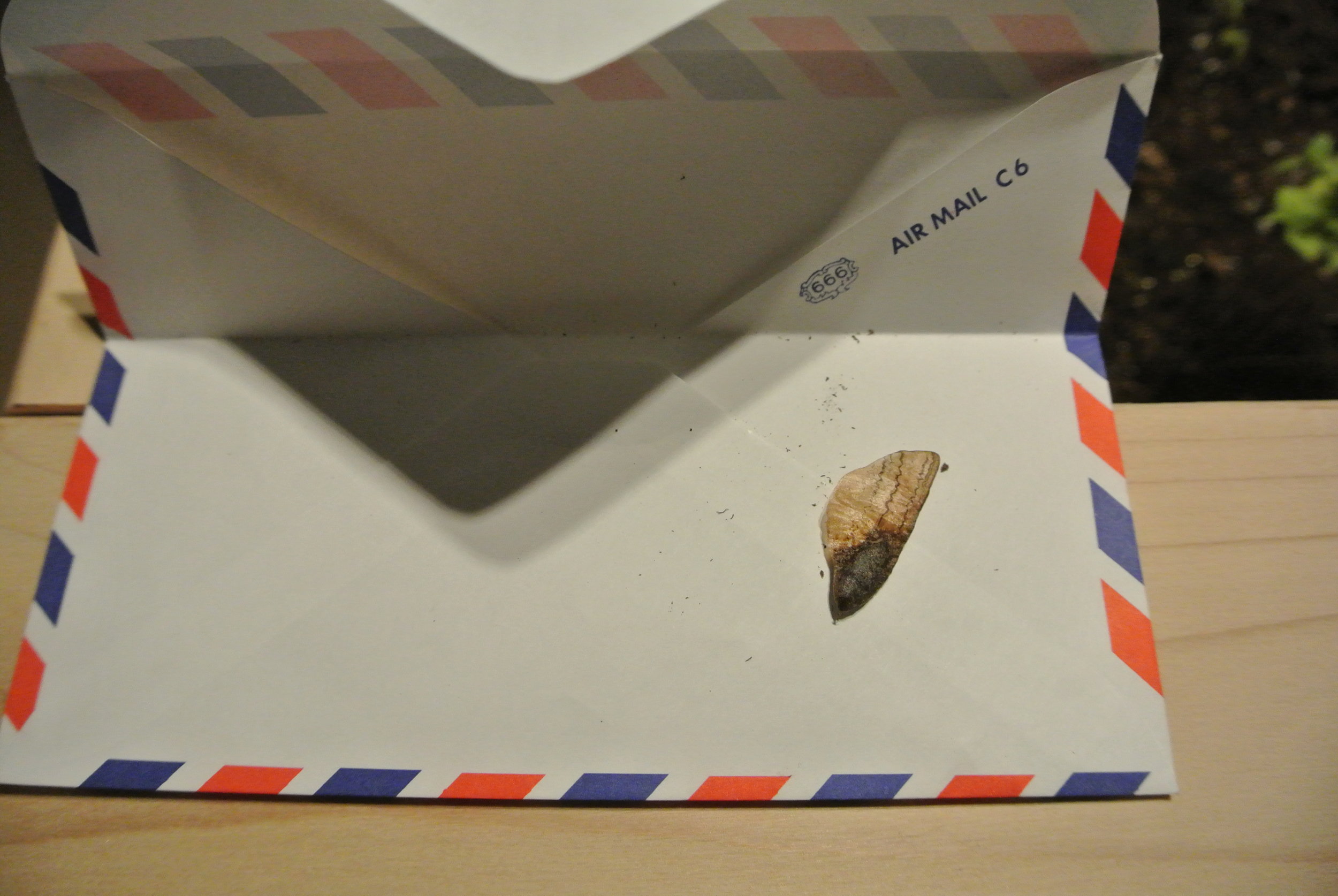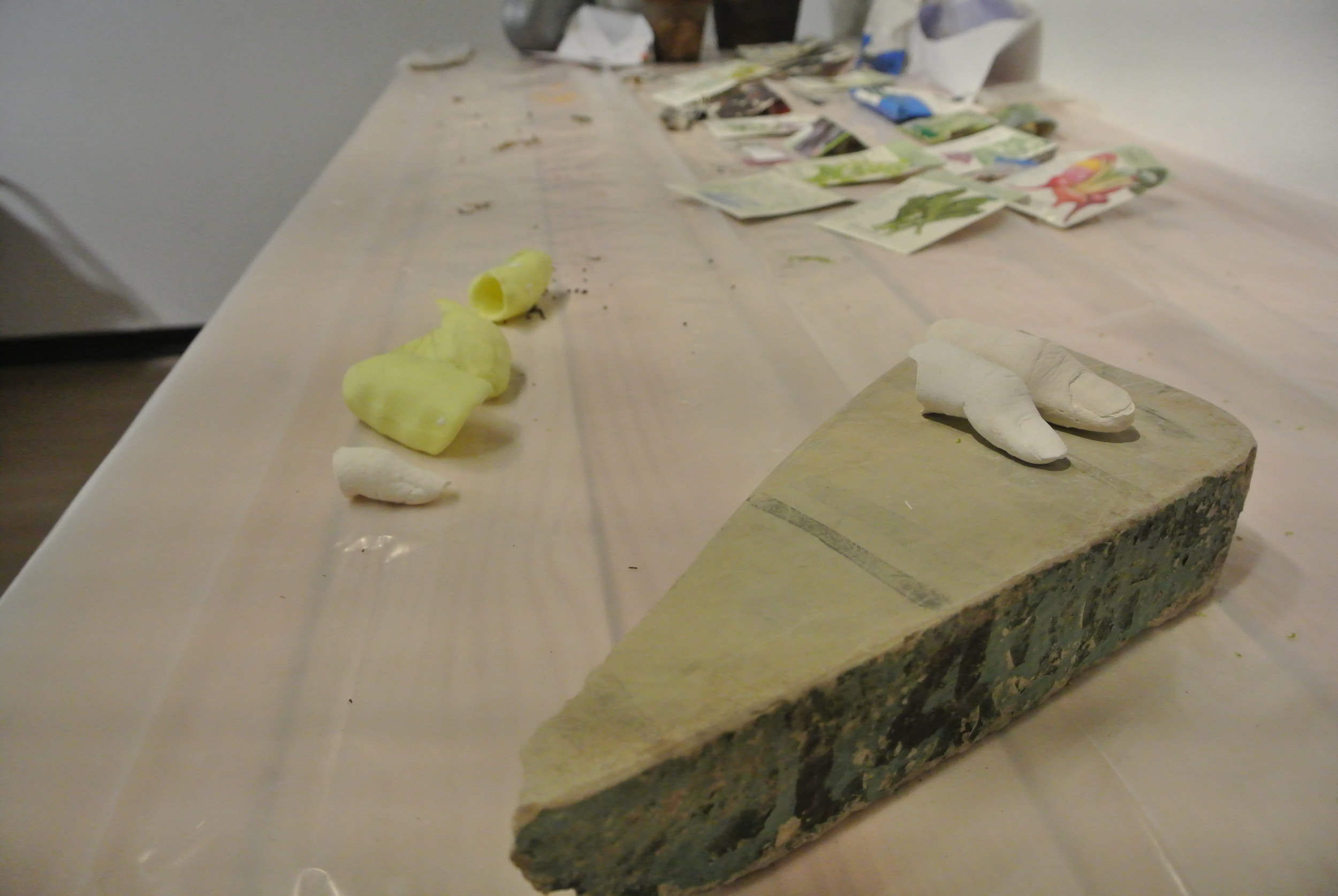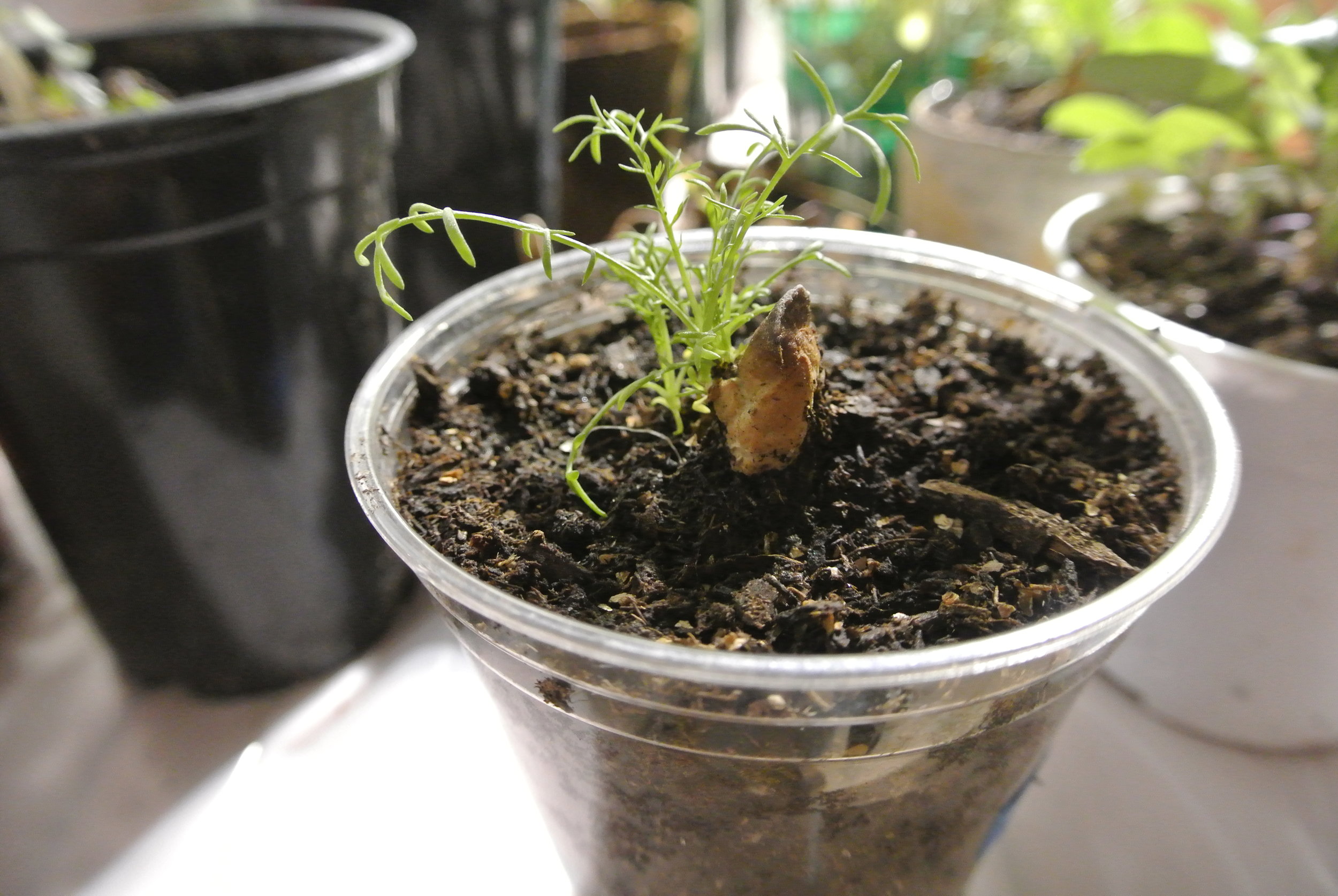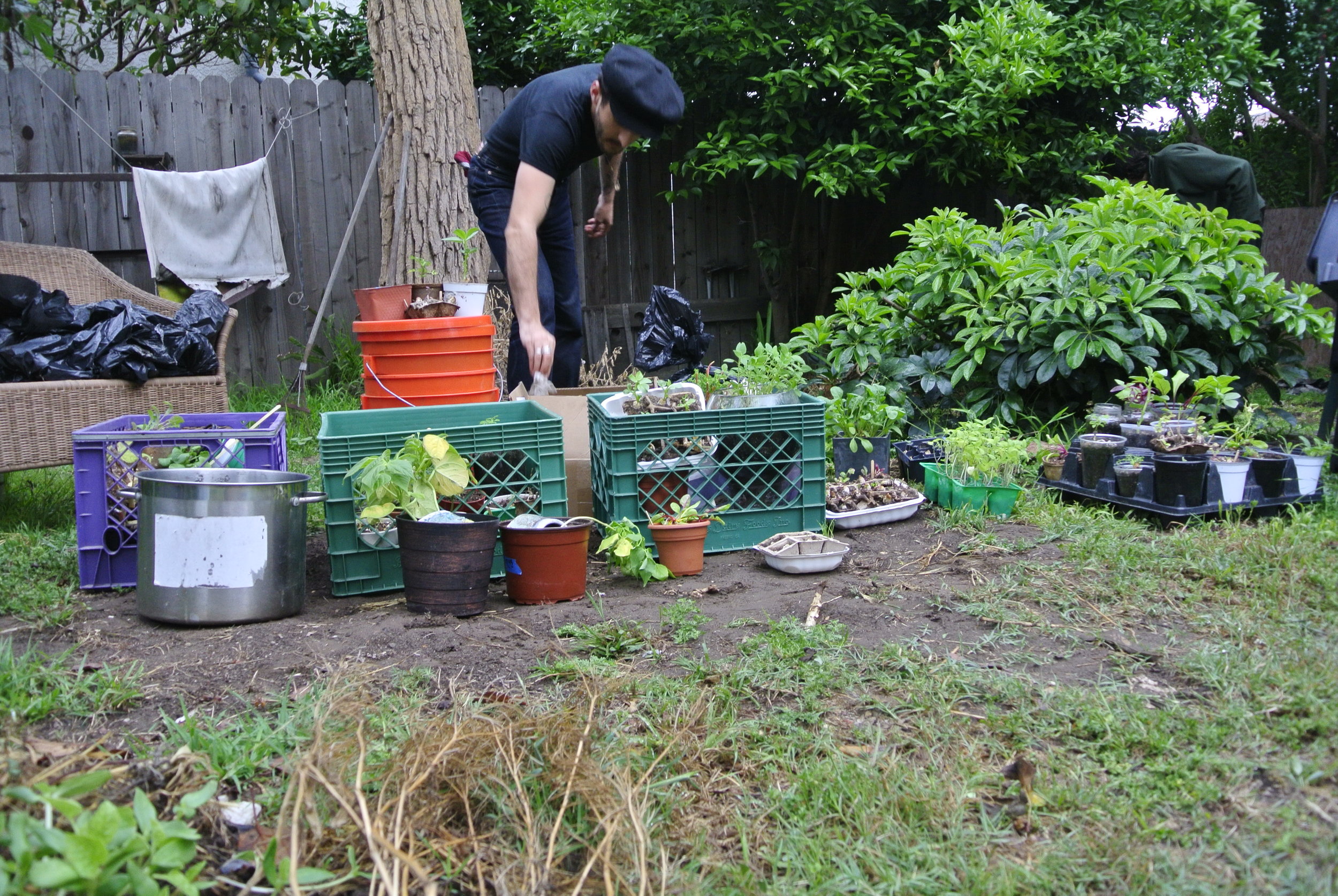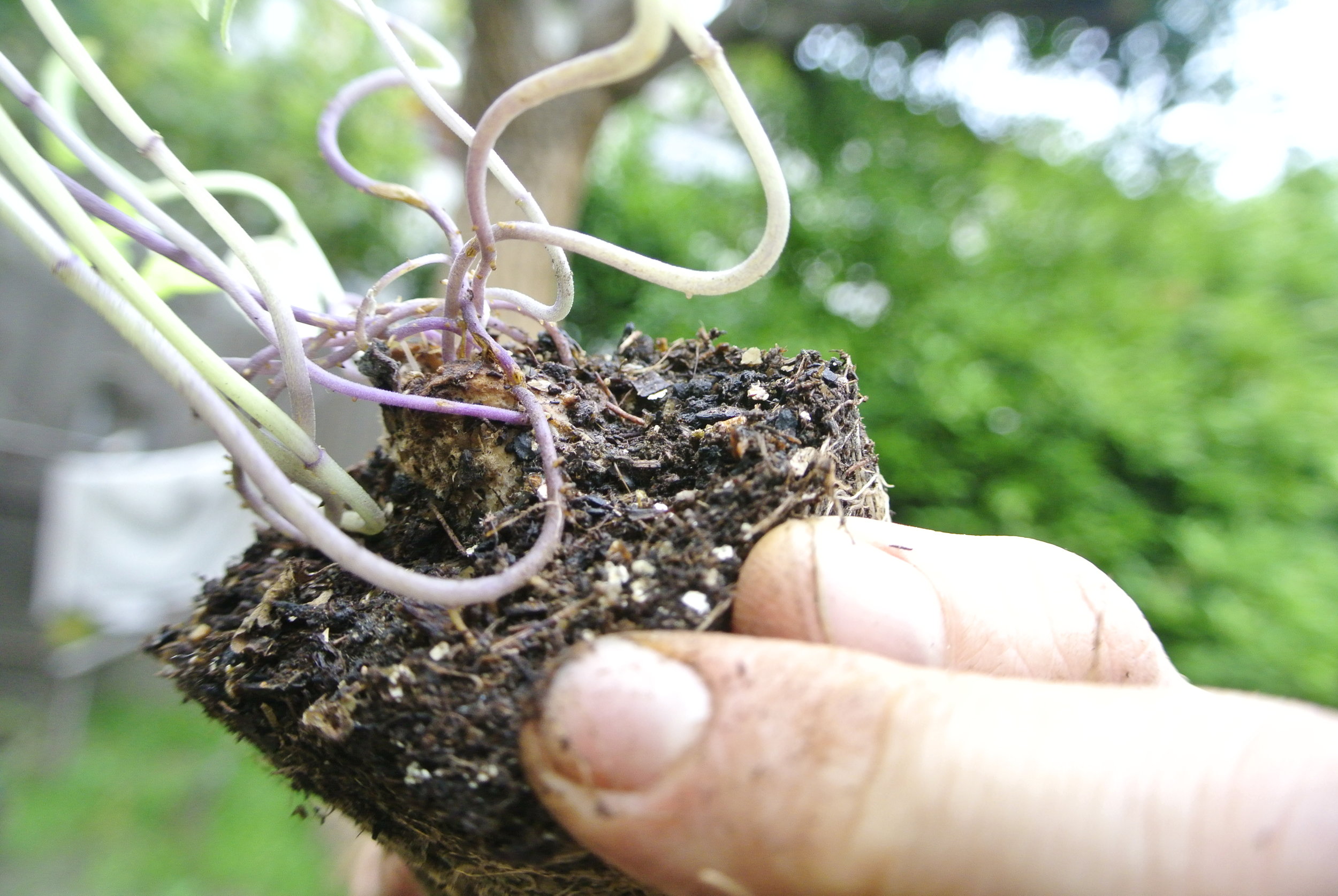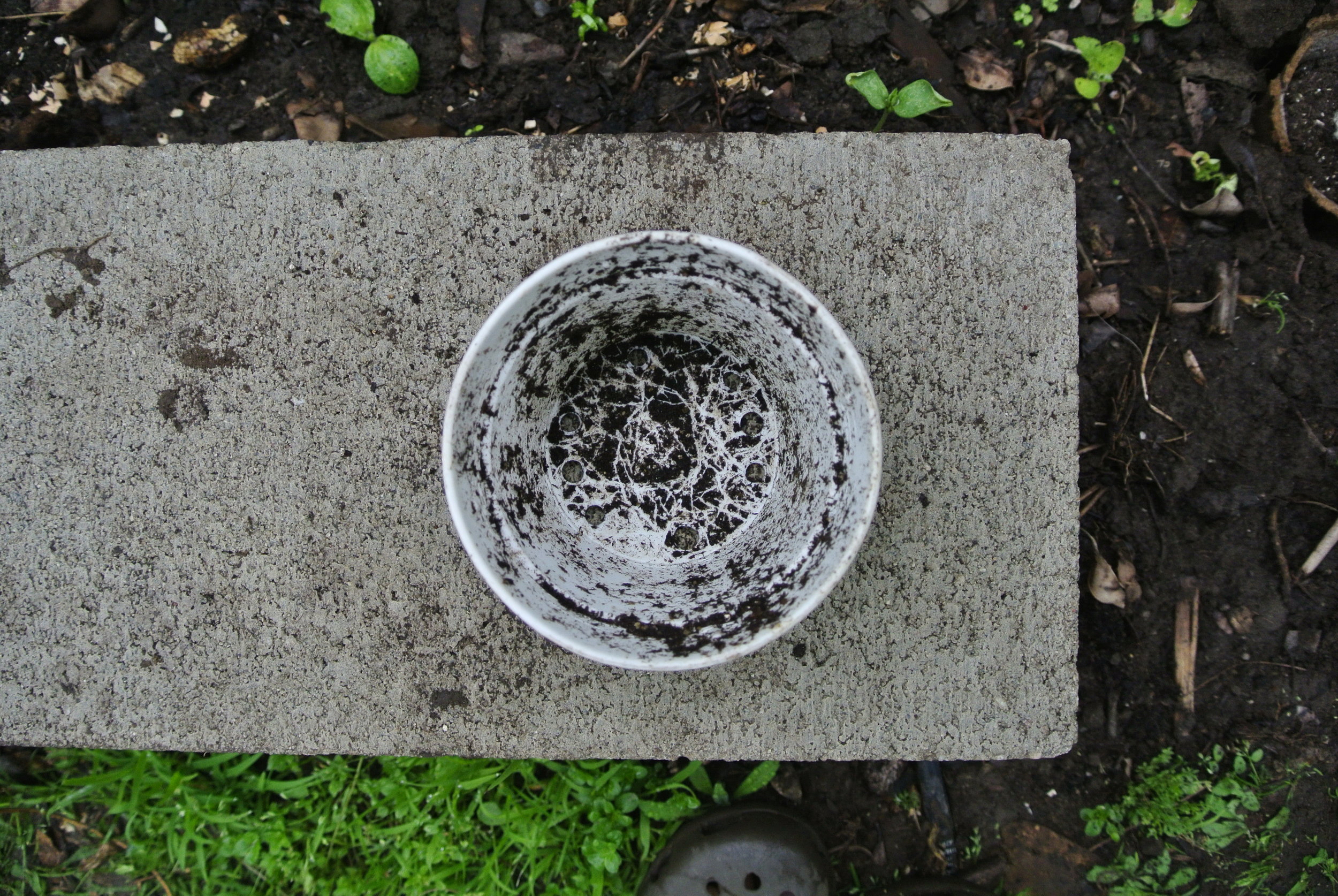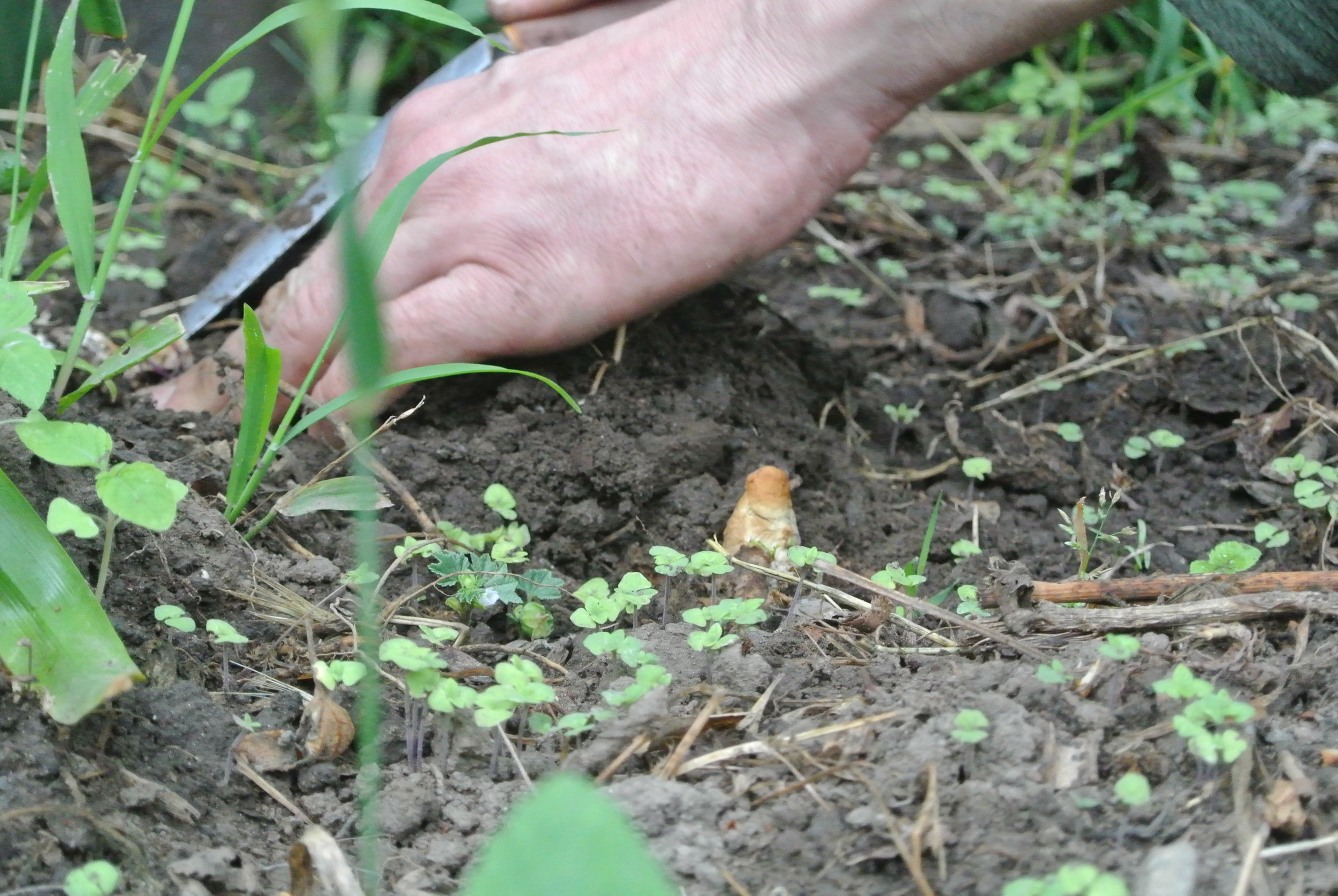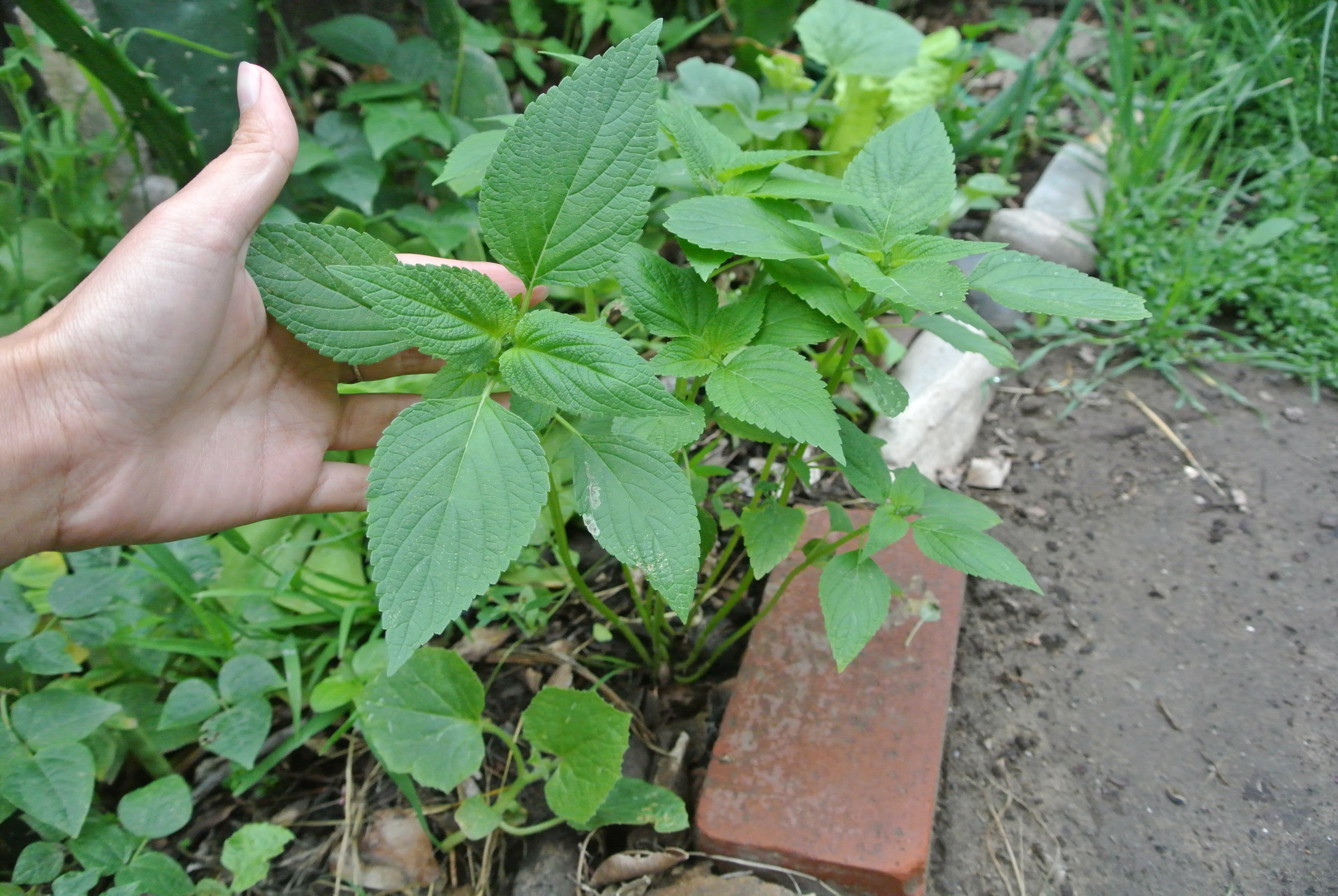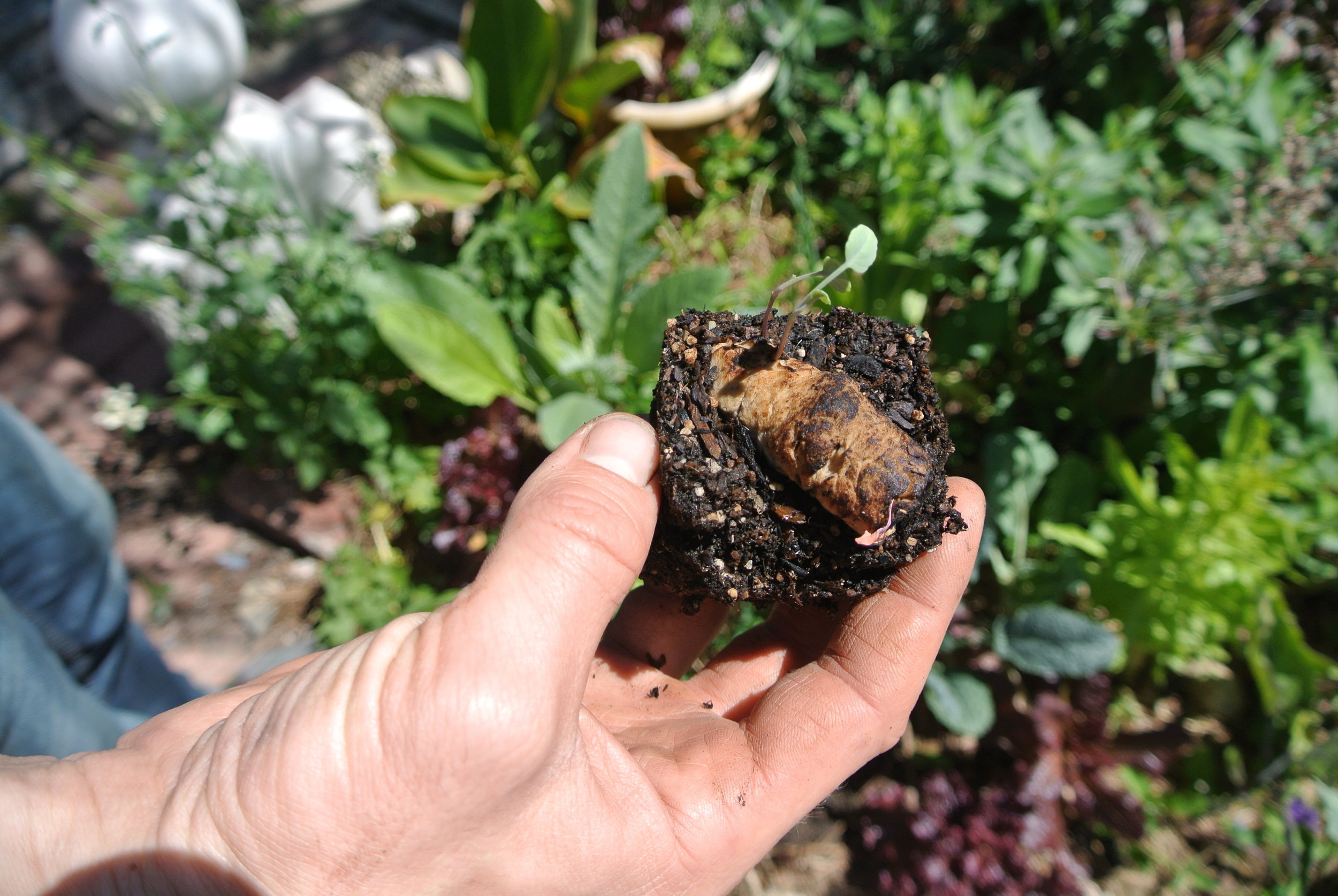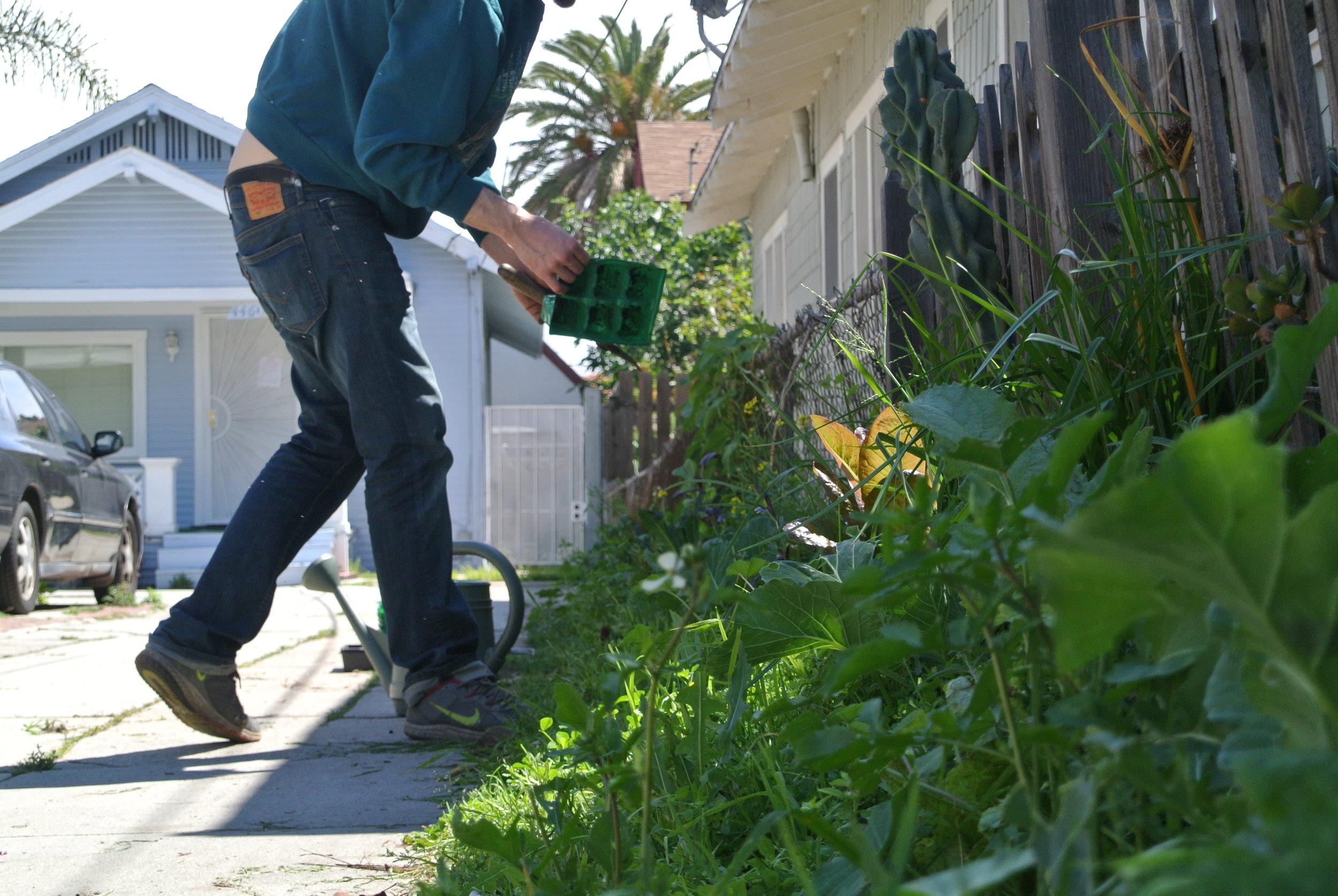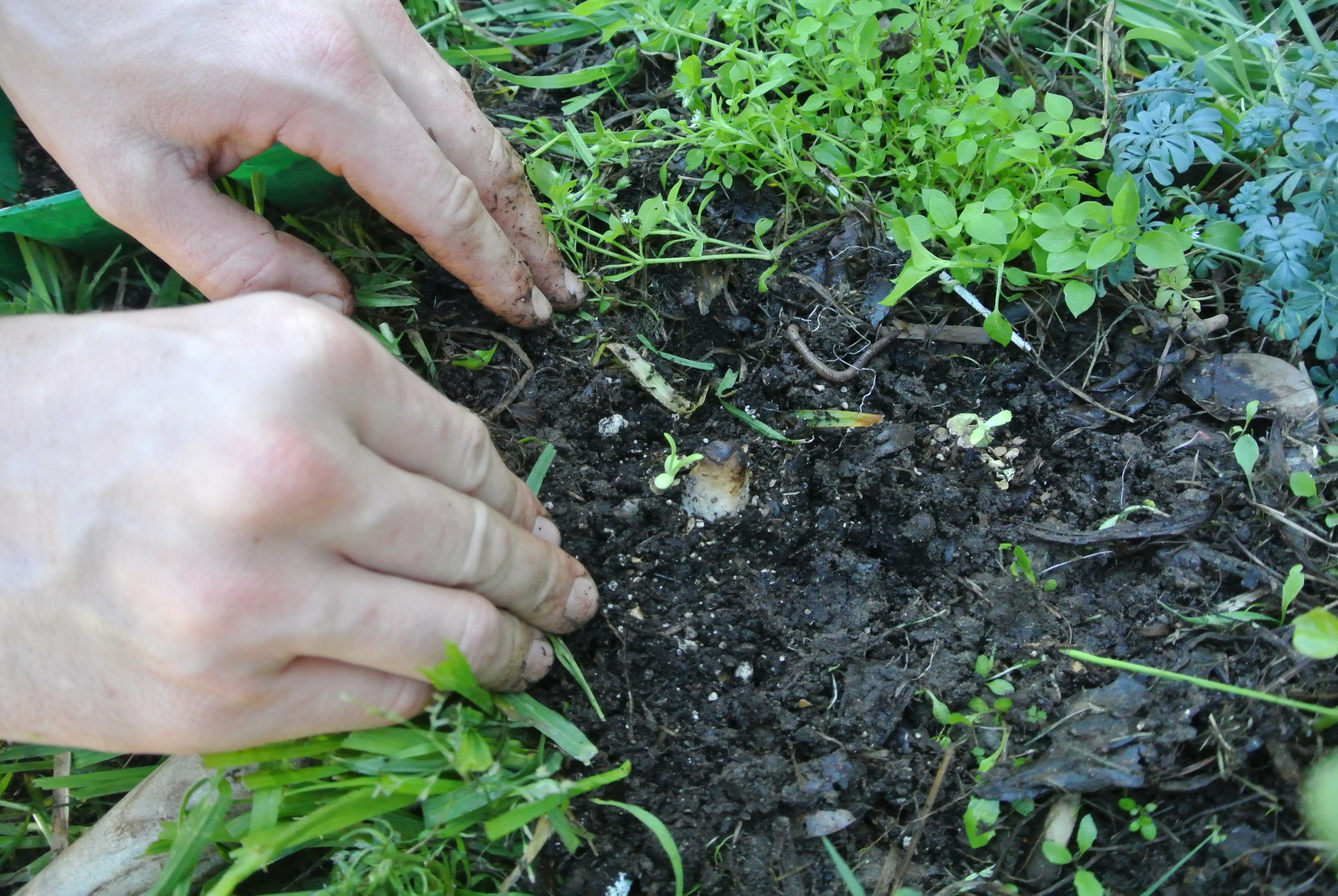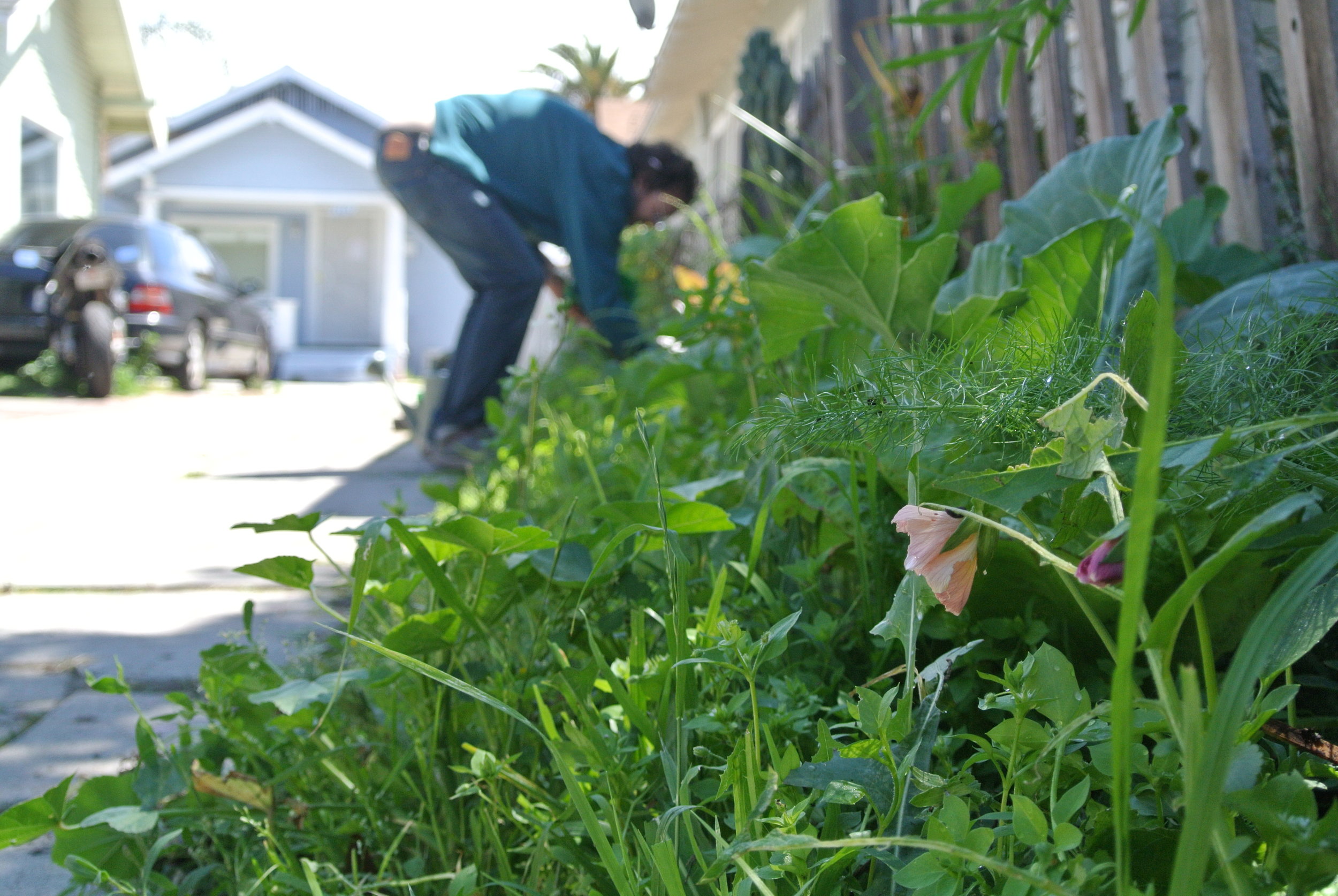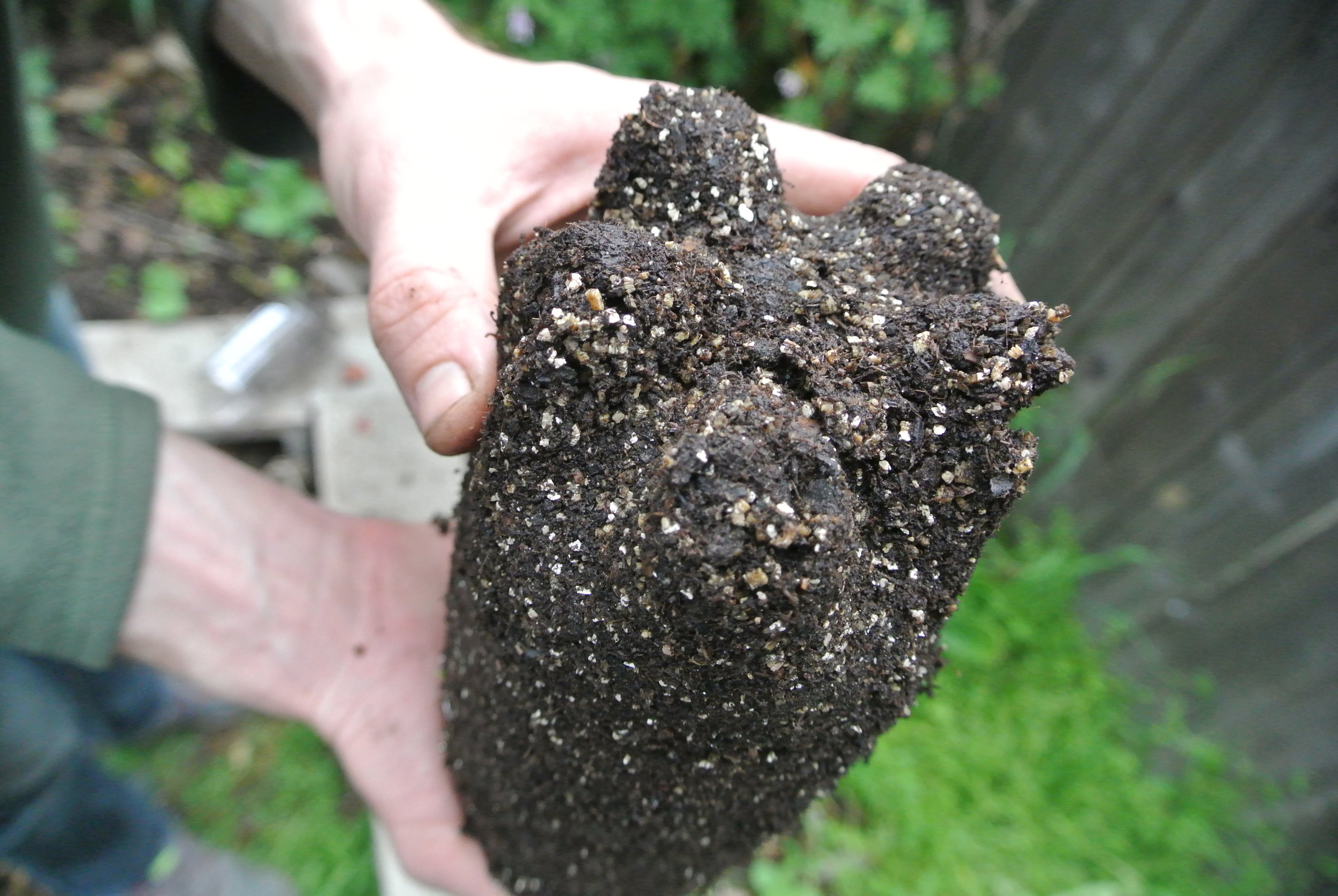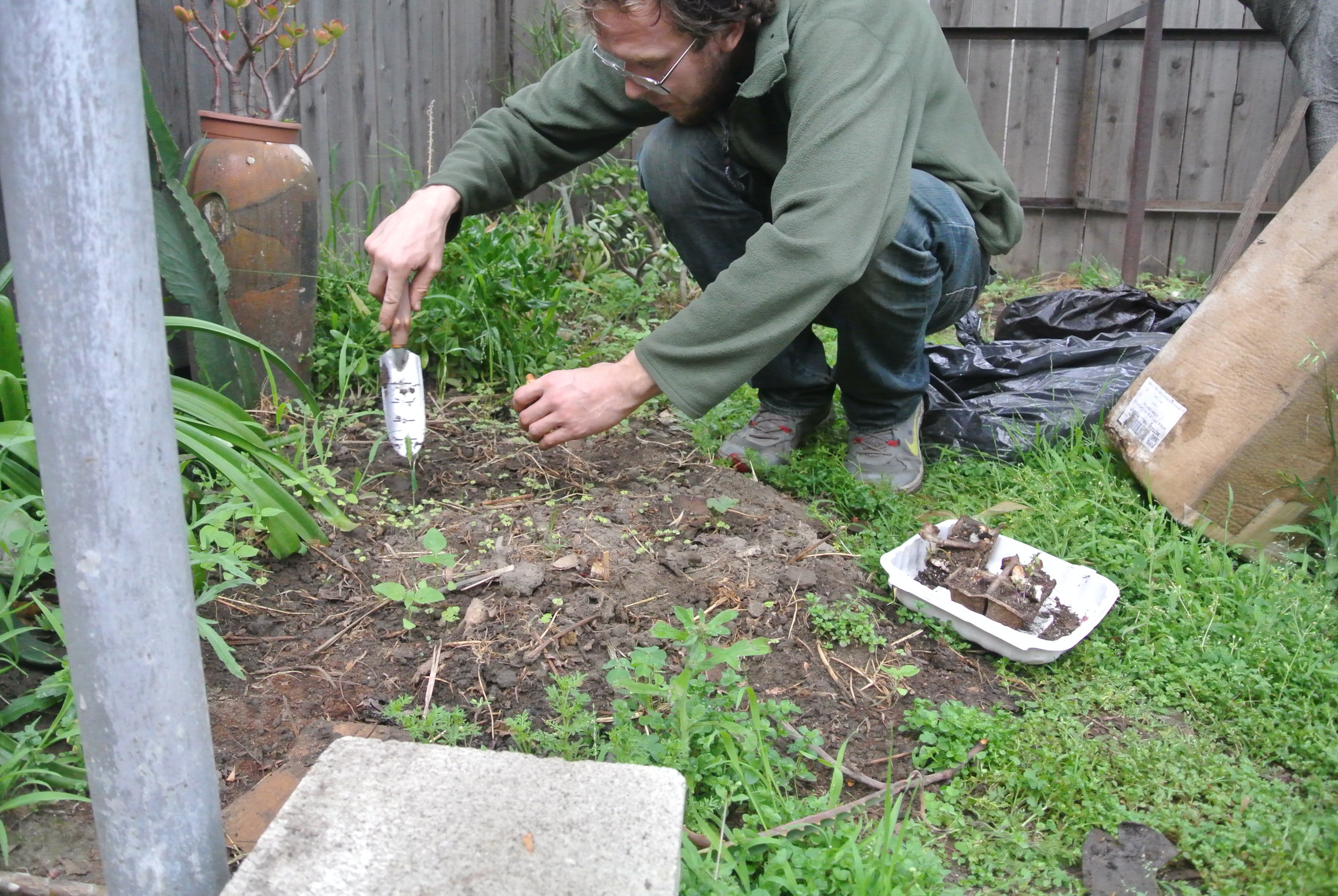*Brief Version — for busy you!
The Green Thumb Project started a little over a year ago, in early November 2014. Before my mother passed away, I took a mold of her thumb. Although she could not speak by that point, I could tell she was entertained by my action: the pressing of some gooey silicone material against her thumb. She had always been amused by my creative process, that tended to throw people off. Despite the little delight I shared with her in her last moments, I tucked the mold away. It took some time to process the emotions that came with her passing — the thumb always had a strong resonance to me, persistently lodged in my consciousness. I knew I had to do something with the thumb eventually. It became something through which I could nurture meaning and create a memento of my loss.
The Green Thumb Project is meant to be as pragmatic as it is metaphoric. Within the pursuit of practical application of art in the field of gardening, one is asked to take notice of the parallels between my plants and myself. The thumbs can be thought of as a relic, produced from my sentiment. However, in the process of caring for the thumbs, the efforts and numerous failures took on another layer of meaning. There are ups and downs that come with growing the thumbs; it is a relationship. For me, this complex experience is healing. Loss is universal, but healing comes in many forms. I hope to reflect one form of healing here, where the coping from loss is merged with daily life activity, producing further feelings to feel.
---------------
*Extended Version — for a reading bug!
I am interested in things that are intangible and impermanent: emotion, a moment, an encounter or interaction. In many of my works, I tend to make an (often helpless) effort to capture these fleeting moments. In the blink of an eye, the ephemeral floats away as if it never existed. They are nonphysical, and we spend an incredible amount of effort trying to hold onto them. I find effort itself incredibly beautiful — ultimately, I hope to capture this in my work. The Green Thumb Project can be considered a memento and relic to the utmost ephemeral sentiment.
The Green Thumb Project, as installed in Max L. Gatov Gallery West and its courtyard, consisted of six raised-bed planters, two tables that displayed plants in various stages of growth, accompanied by a faint audio recording of my voice describing the growth of the sprouts, one table that functioned as a paper-casting station, and a collaged printed work. The paper-casting station hosted an assortment of seed packets and a large glass container holding multiple sprouting paper-casted thumbs.
At a first glance, the project primarily features plants in various stage of growth, but upon further examination and interaction with myself, the viewer gains an awareness of the primary component: my act of casting thumbs, embedding seeds, and caring for the thumbs and growing them into mature plants. Viewers were asked to either read my statement or have a conversation with me personally. In doing so, they gained an understanding that each plant was sprouted and grown from a paper-casted thumb — the mold was taken from my mother before she passed away. In understanding this action, it would become apparent that the project is a means of propagating my sentiment. If the viewers showed enough interest after conversing with me, they were invited to select the seeds of their choice, of which I embedded in the thumb for them. They were then asked to take the thumbs home to be sprouted and planted in their own space.
The large lithograph collage was probably the most "art-like" in the traditional sense. It consisted of six varied-edition lithographs, tiled, cut out and pieced together. Despite the heavy abstraction found in the base tusche wash, there was some representational imagery — primarily depictions of sprouts displayed nearby in the gallery. I created three sections in the image: the bottom third suggested a mass of soil, perhaps an underground view with sprouts growing upside-down. The middle section featured a planet-like circle in the center, which serves as a metaphor for energy and cycles. I cut into the top third of the print — collaging multiple plant shapes from the varying colors and textures therein creating a flourishing atmosphere of vegetation. I hoped the image would function as an altarpiece — speaking towards the natural circulation and regeneration as the central idea of the exhibition.
Nature has been a great muse for artists throughout history, as seen in works of Georgia O'Keeffe, Hudson River School, Ernst Haeckel, and countless others. This inspiration from nature comes in many forms: its beauty, moral lessons, thirst for knowledge, etc. Although the visible primary motif found in The Green Thumb Project is nature itself, the exhibtion operates in a different way, not just because of my use of actual plants, but because of the subject matter it engages. The outcome of the project is actually not as important as its process.
In the production of The Green Thumb Project, I was concerned with my personal experience as the artist rather than that of the audience (although of course their experience mattered to a large extent as well). Furthermore, I am interested in artworks and questions surrounding “lifelike” art that Allan Kaprow shares with his work, especially those done in his ‘beautiful privacy’, where he had no institution or audience to witness his art. The Green Thumb Project contains many invisible performances. The act of making thumbs and growing them spanned several months with no specific audience (except for some passer-byers of my porch—particularly the mailman and my neighbors). Every day, I followed a specific routine that would not have appeared to many as a conventional act of art-making. Collecting scrap paper, tearing paper, cutting them into pieces, soaking and blending them, casting them in a mold, embedding seeds, positioning them up for the sprouting, transplanting, watering, brewing compost tea, and most importantly, waiting and watching. Much like Kaprow’s art, consciousness is the key aspect that separated my act from simply being a daily routine. This is why I call it an invisible performance—as non-theatrical as a performance could get.
The complex thread of actions required in the growth of the thumbs can be summarized as simple gestures of “growing” and “taking care”. Artists like Yoko Ono or Helen Mirra have employed similar gestures of simplicity: Ono’s Painting to See the Sky—more closely related to her other “Instruction” works, suggests the audience take a simple action, in which itself is a gesture, or Helen Mirra’s Sidewalk Film Frames, where she paints a segment of sidewalk green in front of her friends’ homes. In a way, such gestures are extremely minimal, but maintain a quiet and poetic humor. This sort of gesture transforms a simple action in a strange space between mundane and overlooked objects into a subject of sentiment. I had hoped The Green Thumb Project would operate in a similar way, where the simple act of gardening can exist in the realm of sentiment and emotion, and ultimately healing.
I believe in the power of art, where something as isolated as personal loss can be translated into a universal message. In that sense, communication and interaction were extremely important aspects of the project. Loss is something every person experiences in various forms: loss of connection, loss of relationships, and loss of someone close. By giving the audience a choice to take thumbs home, I hoped to achieve an exchange of emotion with them. Giving, or a form of take-away, is something seen in contemporary art as well, such as Untitled (Placebo), 1991 by Felix Gonzalez-Torres. Whereas Gonzalez-Torres's work reflects issues of ownership, it possesses a beautifully transient quality. I had hoped my thumb-giving to be a two-way exchange of experience. While I did not require people to keep in touch with me after our interaction, I expressed my wish for them to keep the thumbs growing, regardless of their previous successes or failures with plants. To my wonderful surprise, some visitors have been in contact with me about the growth of their thumb, and more interestingly, some viewers would re-visit the gallery multiple times sometimes to simply converse with me, and other times bringing me small gifts including mushrooms foraged on the campus ground, a single pine seed in an airmail envelope, and flowers and succulent cuttings. Although this was not something I had expected in the giving of the thumbs, I felt as if these ephemera were a small physical manifestation of the exchange of our shared moments.
The Green Thumb Project is meant to be as pragmatic as it is metaphoric. Within the pursuit of practical application of art in the field of gardening, one is asked to take notice of the parallels between my plants and myself. The thumbs can be thought of as a relic, produced from my sentiment. However, in the process of caring for the thumbs, the efforts and numerous failures took on another layer of meaning. There are ups and downs that come with growing the thumbs; it is a relationship. For me, this complex experience is healing. Loss is universal, but healing comes in many forms. I hope to reflect one form of healing here, where the coping from loss is merged with daily life activity producing further feelings to feel.
